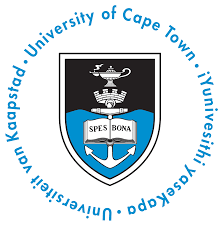Founded in 1829, the University of Cape Town (UCT) has a proud tradition of academic excellence and effecting social change and development. The university employs more than 5,000 staff members across six faculties, including Engineering and the Built Environment, Health Sciences, Science, Commerce, Law and Humanities and the Centre for Higher Education Development (CHED), as well as several hundred clinical joint staff within the Faculty of Health Sciences.
A critical role for a flourishing campus
 UCT’s Properties & Services (P&S) department helps to lay the foundations for academia to thrive with the provisioning of a facilities management function whose value proposition incorporates physical infrastructure planning, project execution, maintenance and operations, hygiene and cleaning, as well as campus security. It also transports staff and students to and from lectures in shuttles, and is always looking at ways to make access to campus sustainable and economical, in keeping with green principles.
UCT’s Properties & Services (P&S) department helps to lay the foundations for academia to thrive with the provisioning of a facilities management function whose value proposition incorporates physical infrastructure planning, project execution, maintenance and operations, hygiene and cleaning, as well as campus security. It also transports staff and students to and from lectures in shuttles, and is always looking at ways to make access to campus sustainable and economical, in keeping with green principles.
Overcoming project management-related challenges within Properties & Services (P&S)
According to Andre Theys, P&S executive director at UCT, the multitude of infrastructure and maintenance projects run within the busy department – generally between 70 and 80 at any point – made information gathering a difficult and time-consuming process. “P&S runs many projects, from the construction of new buildings right down to bathroom refurbishments, all managed by different people. With around 955 staff operating within the P&S department, we found it challenging to provide a ‘client’ (for example, one of the faculty deans) with high level project management information on a particular project should they be requested. It could take a number of days, even up to weeks, to gain access to this information.”
After receiving a recommendation on Project Portfolio Office’s PPO, a locally developed, secure, cloud-based project portfolio management application, Theys researched the product, made contact with the company, and arranged for a demonstration to be given to the department’s planning and project management staff.
“PPO was exactly what we were looking for from a feature point of view, and once we understood that it also operated on a flexible pay per usage cost model, it was a quick decision to roll out the tool.”
UCT opted for an explanatory three-month period initially during the rollout, where PPO was customised to meet its specific needs. Theys explains that P&S wanted to map the way that it carries out its projects within PPO, so that information could be filtered by faculty, department, project manager, and even by building.
“The fact that the solution was up and running within three months is unheard of within an environment used to complex, cumbersome rollouts,” he adds.
Maintenance made easier
Since its implementation of PPO earlier this year, as project sponsor, Theys now has a bird’s eye view of all current projects within P&S: “At a glance, and whether using a laptop, tablet or smartphone, I am able to identify red flags on projects, budget challenges and resource usage across the planning, projects and maintenance divisions. In terms of feedback to our clients, reports that previously took up to two weeks to collate can now be delivered in a matter of minutes.”
Twenty-five planning, projects and maintenance professionals within P&S, are currently using PPO, with all employees now following the same methodology through the solution. “As a department, we really have unlocked great value within PPO ensures a higher level of consistency across our project management practices and processes and following this dependability through to our service levels. It has also allowed for improved resource management.
“The way staff has taken to PPO is unprecedented. Initially, project managers’ usage was limited to reporting, but staff has adopted and used all of PPO’s available features without prompting.
“An unintended benefit of the tool is that clients are now aware of the number of projects done for each faculty, something that they did not understand before. Now, each client has a launch meeting, and is then regularly updated on milestones and costs throughout a project, helping to smooth stakeholder relationships. While we haven’t officially measured client satisfaction, a significant decrease in queries speaks volumes”, he adds.
“Furthermore, PPO ensures that a project cannot be closed without the predetermined milestone of a handover to our maintenance, security and cleaning teams being met.”
An additional and massively value adding benefit, says Theys, is the basket of learnings received via client feedback at the end of each project, to be utilised as part of a continual learning process. “PPO has so many valuable features as standard that we are still discovering uses and tools to aid in project delivery well over above the initial ask.”
“As a software-as-a-service offering, PPO simplifies online project management with an intuitive, easy to use interface that allows users to get up and running with minimal training,” explains Guy Jelley, founder and CEO of Project Portfolio Office. “A flexible subscription model also allows for businesses to scale usage up and down as needed, and pay only for licences used.
“While PPO has provided UCT P&S with the required visibility on its project portfolio and allowed it to drastically cut down on reporting time, it is the P&S division’s clear vision and senior level involvement from day one that has allowed for the success of this implementation. Andre has played a key role in ensuring that the use of PPO matches the university’s P&S objective”, he concludes.


